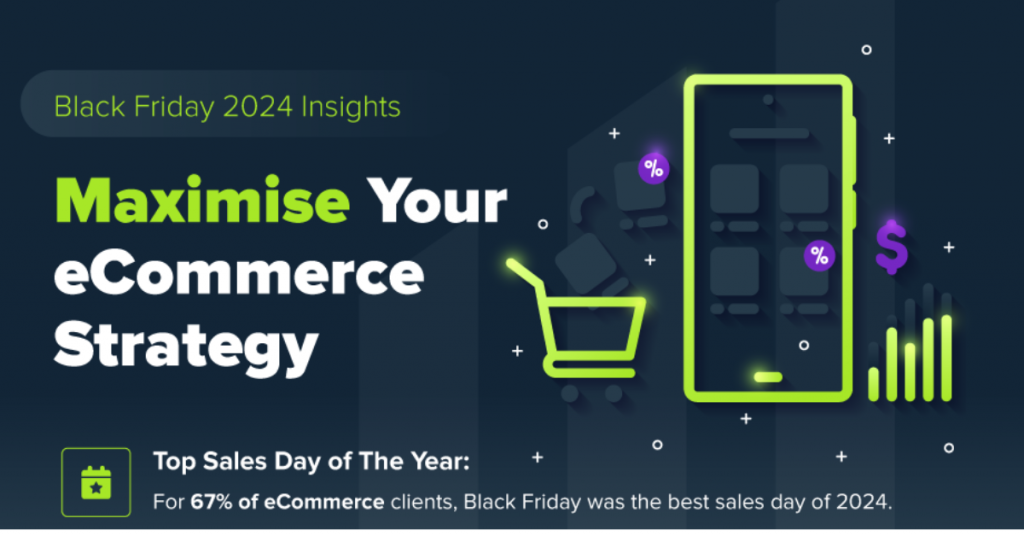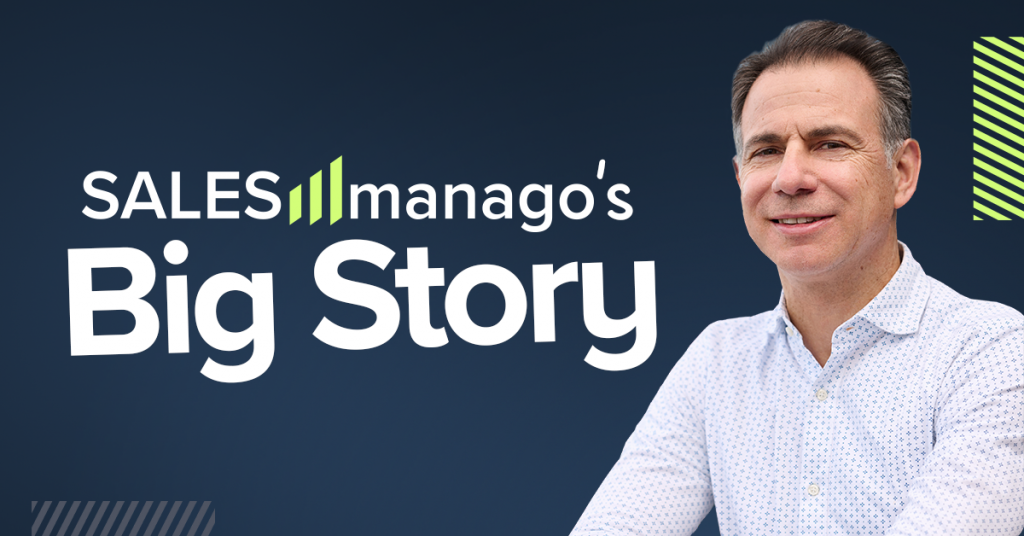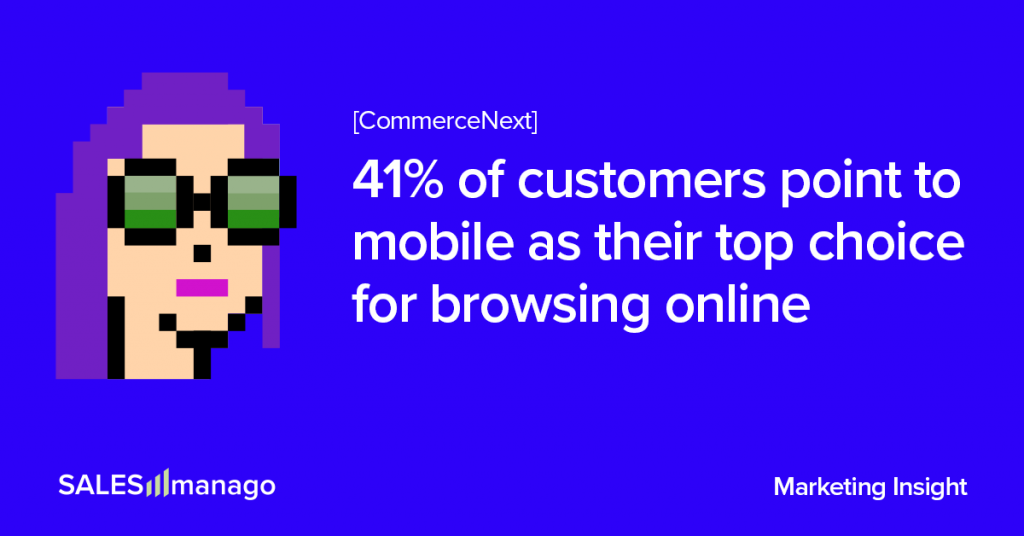
We meticulously researched the latest customer trends to separate the wheat from the chaff and provide you with a reliable sense of the general direction of eCommerce’s evolution. Here is what we discovered:
Customers are going mobile
Customers tend to discover more products online than in stores. 55% of them prefer it for convenience, 46% for greater choice, and 45% for the ability to research reviews and products (Bazaarvoice).
46% of consumers prefer their mobile phones for browsing online. Laptops are the top choice for 26% of the consumers, and tablets for only 10%.
Even more interesting is where they are actually buying: 44% stick with phones, but 28% choose laptops, which is a 2 percentage point increase. Tablet users remain faithful to their devices; the same 10% browse and buy using them. It seems that some shoppers trust computers more when it comes to finalizing the contract.
The reason might also be the greater convenience of computer shopping. Browsing sites on phones may be uncomfortable for some users. This is probably why App Annie predicted that US shoppers would spend over 900 million hours on mobile shopping apps in Q4 2021. Apps are simply more convenient to navigate than the sites.
Data from eMarketer supports all these findings and predictions, indicating that mobile commerce will increase 18.8% to $97.15 billion during this holiday season and will reach nearly $4.5 trillion, or 69.9% of total retail eCommerce sales, by 2024.
In our opinion, considering that mobile devices have been almost equally able to service eCommerce as computers for quite some time, the latter are still holding up surprisingly well. The factors stopping customers from going entirely mobile may be greater convenience of computer navigation and the resulting ease of finding things they are looking for.
Another factor may be the insufficient utilization of mobile-commerce-supporting technologies by eCommerce. However, these technologies exist, and, as we show later, are within eCommerce’s grasp.
Customers expect to find what they are looking for easily
The assumption of ease in finding remains a key factor for customers going online but not entirely mobile, according to the results of the CommerceNext report, sponsored by ContentSquare.
In CommerceNext’s survey, 42% of participants pointed to “Ease of finding what I’m looking for (e.g. specific features, colors, sizes, etc.)” as an answer to the question “What do you look for in a website when shopping online?”
It is worth noting that this answer was the third most commonly chosen, right after no-brainers like “Prices” and “Deals and promotions.”
Navigation is the biggest reason they’ll return again—it’s now as big an asset to a brand as expedient delivery. When asked, “What aspects of the online shopping experience make you want to purchase from a website in the future?” 38% answered, “A website that’s easy to navigate.”
The conclusion we draw from these results is that “navigation” may be understood as synonymous with “ease of finding.”
…and trust the reviews
36% of the aforementioned survey’s participants pointed to “Product reviews” as an answer to the question “What do you look for in a website when shopping online?”
When asked, “What type of content is most helpful to you when shopping online?” 59% of the respondents answered, “Product reviews/testimonials.” This was the second most chosen answer, after “Detailed product specifications” (68%).
This clearly shows how important social proof is for eCommerce.
…but they don’t want their information shared with third parties.
Interestingly, 38% of survey participants, when asked, “What do you look for in a website when shopping online?” answered, “Knowing my personal information is secure & not shared with third parties.”
This supports our stand on the future of eCommerce: Customers want personalized offers, but to get them, they want to communicate their personal information and preferences only with the brands of their choosing.
Exactly like with brick-and-mortar stores, customers want to enter personal, consensual relationships with brands based on the foundation of mutual trust and respect.
There are technologies to deliver!
Considering how capable today’s smartphones are, it is surprising that only about half of shoppers use them to browse and buy. As we stated, the problem may just be widely understood CX. Besides eCommerce frontends, many other technologies are able to enhance the customer experience, help customers find what they are looking for, and push them into action in a mobile channel.
Mobile Marketing feature
This feature uses the customer’s mobile device to deliver 1-to-1 offers anywhere they are with SMS, push notifications, and messaging apps. Integrate MobileApp Marketing Automation to track app usage, build dynamic behavioral segments, and send truly omnichannel campaigns.

The feature has great potential to push customers into action in a mobile channel.
Website Personalization feature
With this feature, you can make your website visitors feel at home with real-time personalization, lowering the bounce rate. This enables you to replace general offers with ones tailored specifically to them.
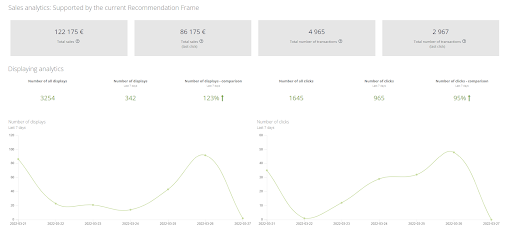
This feature addresses customers’ desire to “easily find what they are looking for.” Personalized content means showing only preferred products, reducing the need to browse the entire site to find just the right offer.
Social Proof feature
With Social Proof, you can create a unique, interactive customer experience in the buying process by displaying simple notifications on the product page that show other users’ interest in the product.
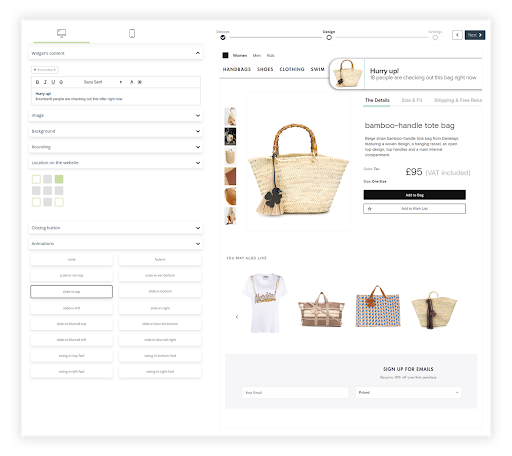
Customer Preference Center
This is one of our latest features and the one with the potential to revolutionize eCommerce. Customer Preference Center is the first tool in the world that enables you to collect, manage, and act on zero-party data!
Zero-party data is data the customer consciously and deliberately shares with the company. It is not deduced from behavior, like first- and third-party data. It provides the most explicitly expressed knowledge about customers, their needs, their preferences, price ranges, offers they want to receive, communication channels, etc.
It is the most reliable and relevant collection of information about your customers.
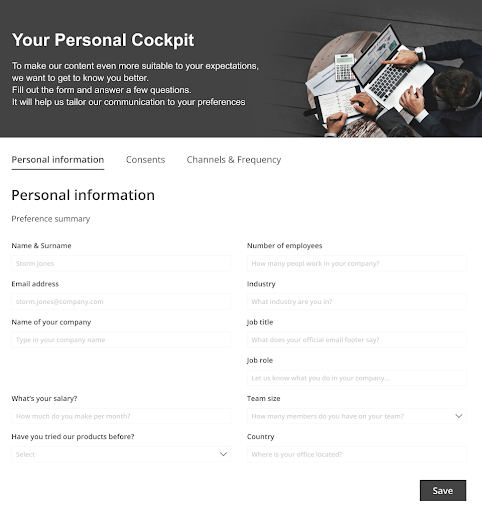
Data gathered via Customer Preference Center enriches the unified customer profile in CDP and is then easily actioned, such as in Automation Rules.
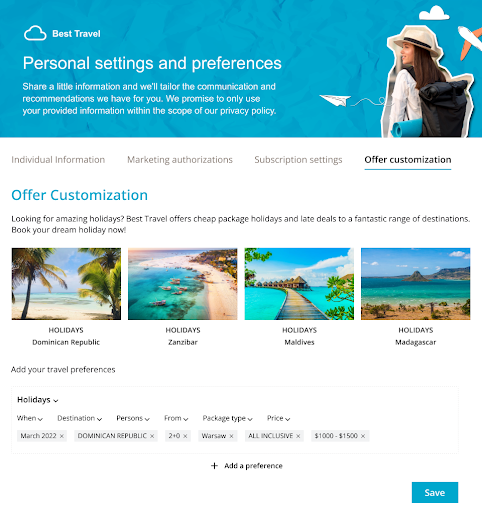
This allows you to not only better personalize the website but also to send extremely personalized offers via:
- SMS
- WebPush notifications
Doing so increases your potential to push customers into action in a mobile channel.

 Follow
Follow











